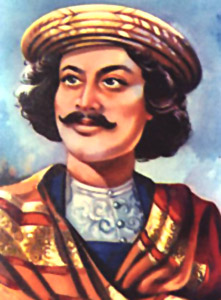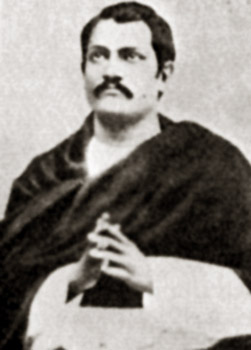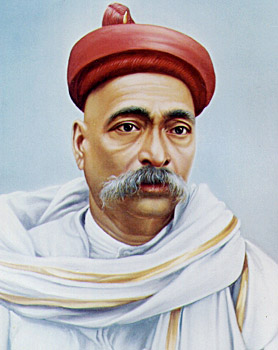 Hinduism in the modern period dates back to 1750 A.D. The British supremacy was established over India after the subjugation of the Marathas and Sikhs. The government was transferred to the Crown after the Great Indian Revolt. There were new forces working mutely towards a great Renaissance. English language was introduced in the education system. Sati, infanticide, enforced widowhood, child marriages, untouchability, purdah, Devadasi; caste system began to lose their oppressive hold on the Hindu minds. Reformers arose who were firm to eliminate these evils from the society.
Hinduism in the modern period dates back to 1750 A.D. The British supremacy was established over India after the subjugation of the Marathas and Sikhs. The government was transferred to the Crown after the Great Indian Revolt. There were new forces working mutely towards a great Renaissance. English language was introduced in the education system. Sati, infanticide, enforced widowhood, child marriages, untouchability, purdah, Devadasi; caste system began to lose their oppressive hold on the Hindu minds. Reformers arose who were firm to eliminate these evils from the society.
The early Christian missionaries started their attack on Hinduism and Hindu society. They scorned at the Hindu religion and social institutions. They opened schools and colleges where they imparted new secular knowledge as well taught Christianity as the only true religion to be practiced. In this period there arose several reformers, teachers, saints and scholars who purified Hinduism. They did so by denouncing by separating the essentials from its non-essentials, confirmed its ancient truths and carried its message to Europe and America.
Brahmo Samaj
The chief reform movements of this period include Brahmo Samaj, Prarthana Samaj and the Arya Samaj. Ram Mohan Roy was the founder of the Brahmo Samaj. Ram Mohan Roy`s name will be remembered in connection with the abolition of Sati. He had begun his agitation against Sati in 1818 A.D. by writing pamphlets and rousing public outlook. It was on the strength of the Hindu law that he gave his verdict against Sati and it was declared illegal in 1829 A.D. by Lord William Bentick.
 The second phase of Brahmo Samaj began with the entry of Maharshi Debendranath Tagore as its leader. He was primarily responsible for the spirit of rationalism which grew apace among his followers and widened the gulf between Hinduism and Brahmanism.
The second phase of Brahmo Samaj began with the entry of Maharshi Debendranath Tagore as its leader. He was primarily responsible for the spirit of rationalism which grew apace among his followers and widened the gulf between Hinduism and Brahmanism.
Keshab Chandra Sen was against Debendranth`s ideals. He wanted to broaden and deepen the religious life of his church. He introduced Vaishnava forms of Bhakti
The doctrine of intuition formulated first by Debendranath and developed later by Keshab himself. He had introduced the doctrine of intuition and the doctrines of inspiration. The doctrine of inspiration advocates that God generally reveals truth to us through insight and reason. His religion was a corporation of Brahmo rationalism, Vaishnava emotionalism, Christian supernaturalism and Vedantic spirituality.
Prarthana Samaj
Prarthana Samaj is an off-shoot-of the Brahmo Samaj of Bengal. Mahadev Govind Ranade was one of the greatest exponents of this Society. It allied its theism to the older theisms of the Bhagavatas and the saints of Maharashtra.
Arya Samaj
Arya Samaj was founded by Swami Dayananda in 1875. Swami Dayananda believed in Karma and rebirth. He maintained the old rites of Upanayana and Homa.
 Influence of Indian Leaders
Influence of Indian Leaders
Bal Gangadhar Tilak is considered as one of the social reformers of India. He through his weeklies and magazines wrote against the Christian missionaries and how they were exploiting people and institutions in the name of revival.
Annie Besant and Theosophical Society helped the revival of Hinduism towards the close of the nineteenth century. Sanskrit learning was revived by them. Annie Besant considered herself as a Hindu by heart and started reading the ancient Hindu texts. The Theosophical Society centre at Adyar, near Madras (now Chennai) became popular as most of its teachings were taken from Hindu and Buddhist scriptures
Sri Ramakrishna Paramhamsa traversed the entire region of religious experience through Tapas and confirmed by his own personal testimony the truths of the Hindu scriptures. His life is a clear illustration of the liberating power of true religion. He was a tolerant experimenter in religion. Swami Vivekananda was his disciple. He showed through his teaching and by example that if ancient Vedanta is reinterpreted in the light of Sri Ramakrishna`s spiritual experience and applied to modern life, it would enable India to solve all the problems.
Rabindranath Tagore had imbibed the spirit of the Upanishads very well. His Sadhana proved how deeply he pondered over the sacred texts. He had clearly pointed out their significance to the modern mind. His poetry reveals devotional and Nature mysticism.
He had dispensed with all mythological symbols and sectarian names and forms.
The Indian Renaissance reached its zenith with the teachings of Mahatma Gandhi. According to Gandhi God is a living presence as well as an inner voice in oneself. To Gandhi Hinduism was an unyielding pursuit. His interpretation of Varnasramadharma, denunciation of untouchability, advocacy of woman`s rights, expansion of the doctrine of cow-protection, and Satyagraha are his teachings which enriched Hinduism.
The Renaissance made India pay more attention to life on earth and to the well-being of society which has thereby rescued Indians from a philosophy of listless inaction. The philosophy of the Upanishads is now a fresh application to our own problems.




















